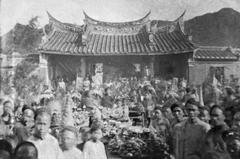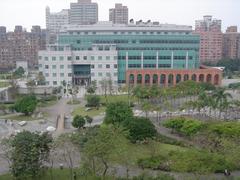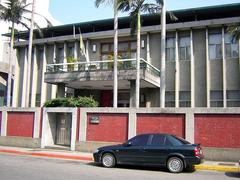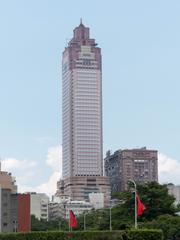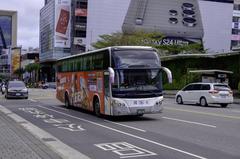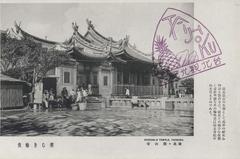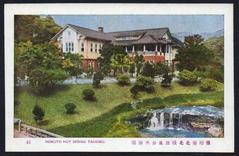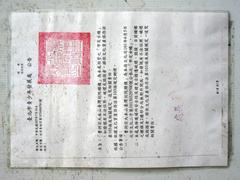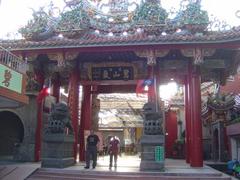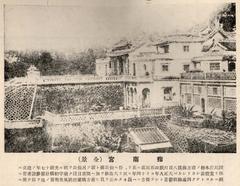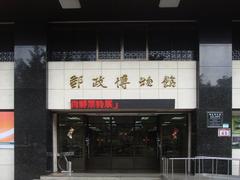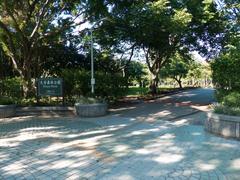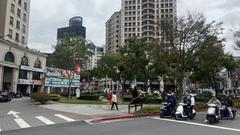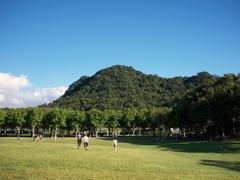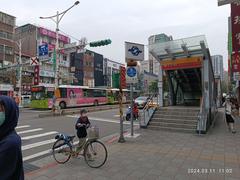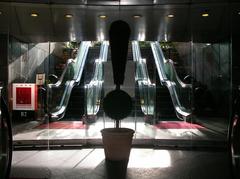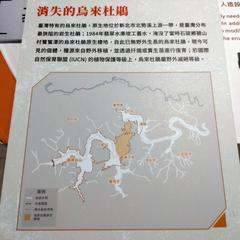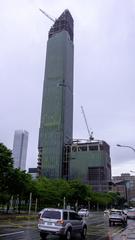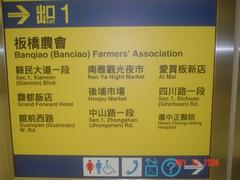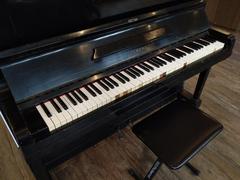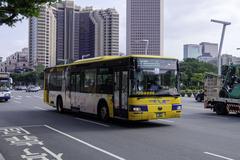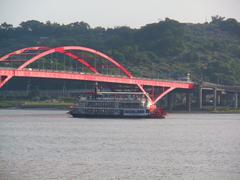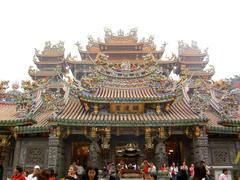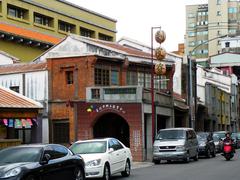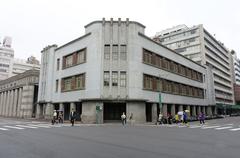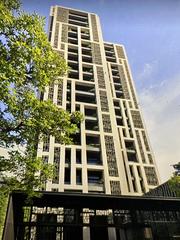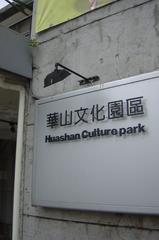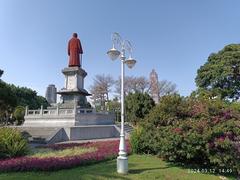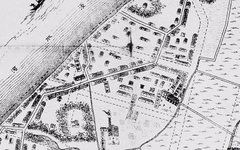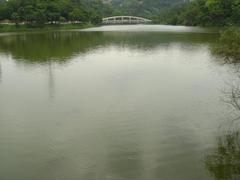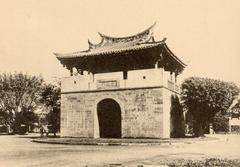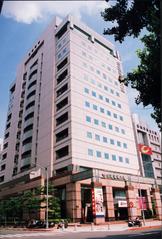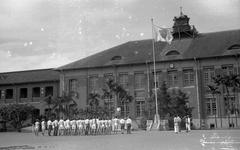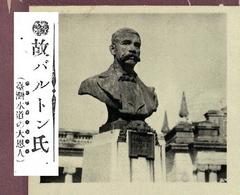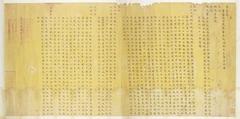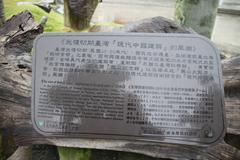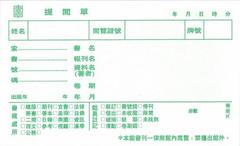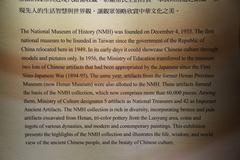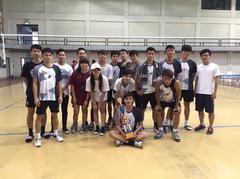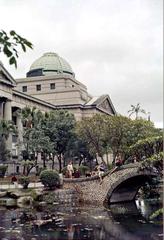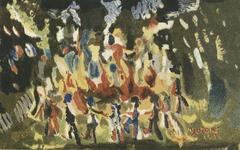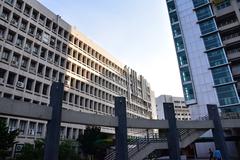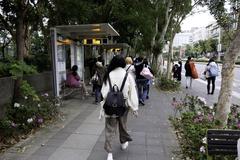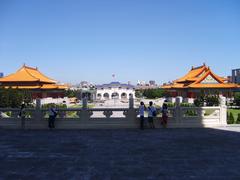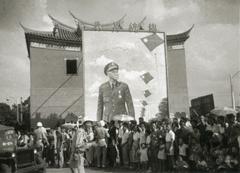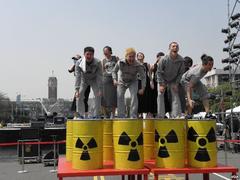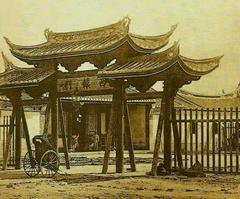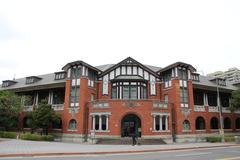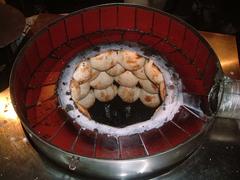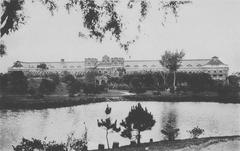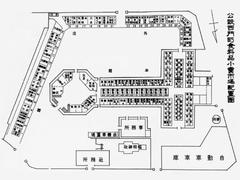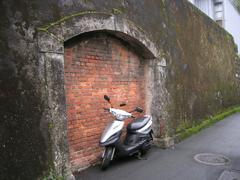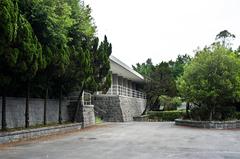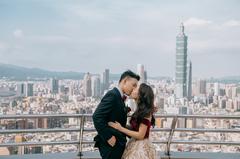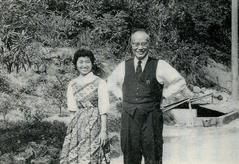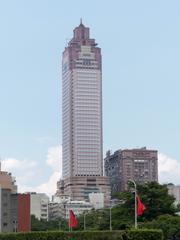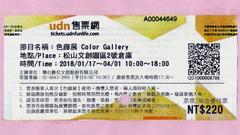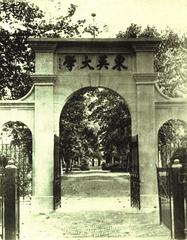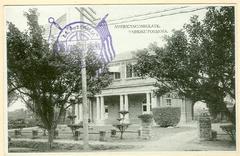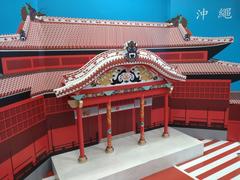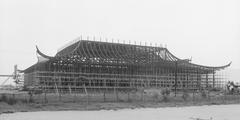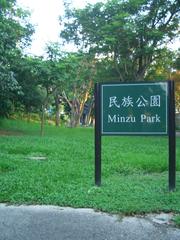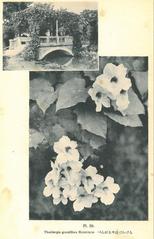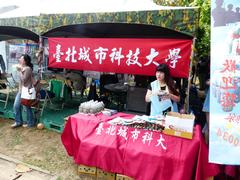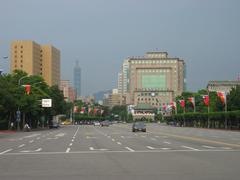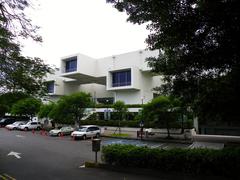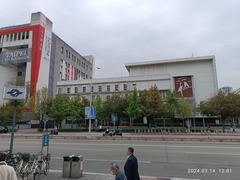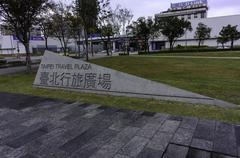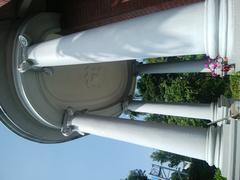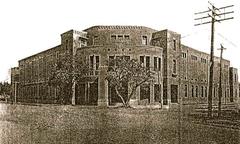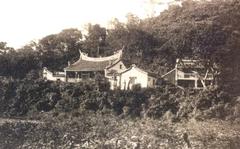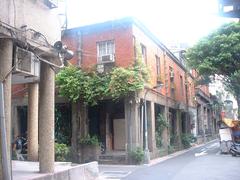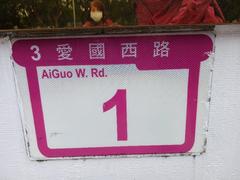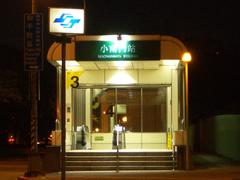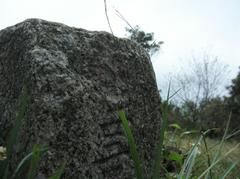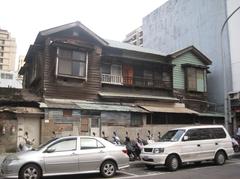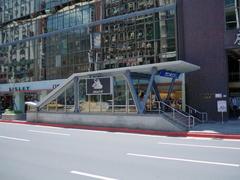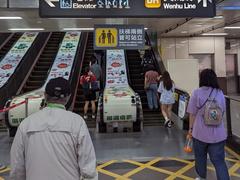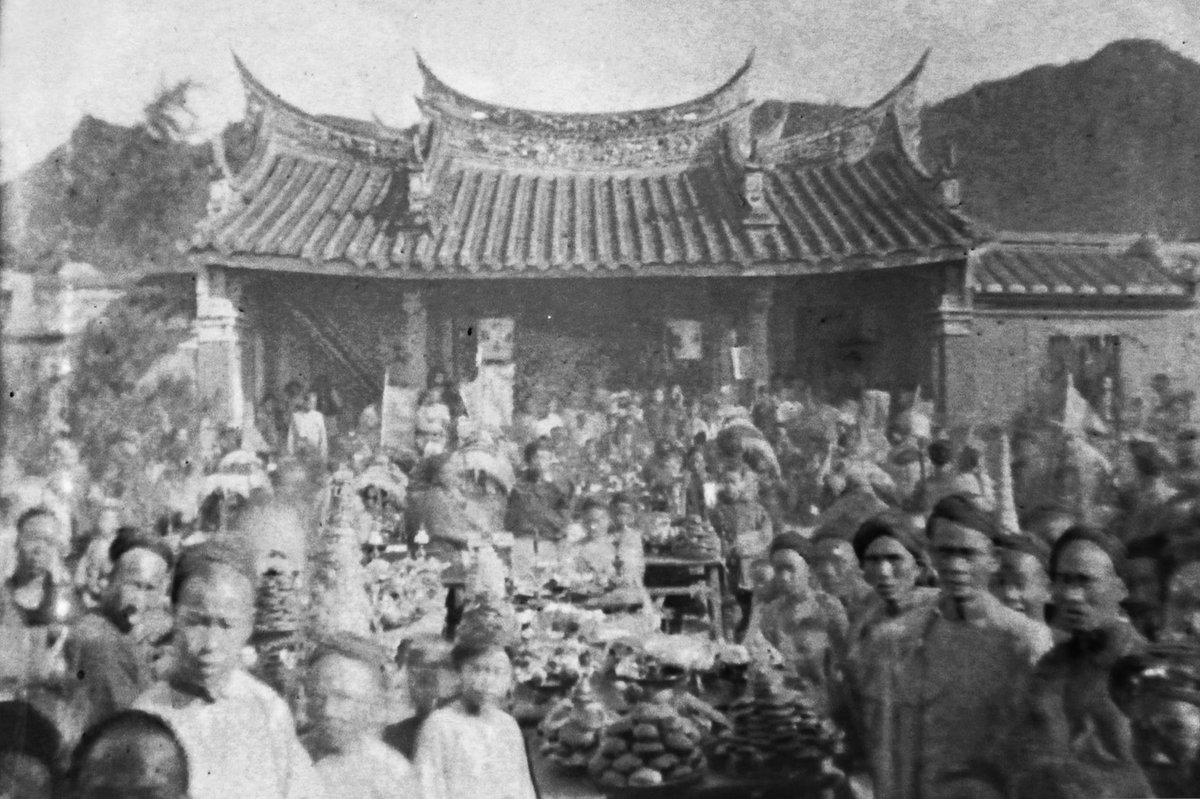
Jingmei Jiying Temple, Taipei: Visiting Hours, Tickets, and Comprehensive Visitor Guide
Date: 15/06/2025
Introduction
Jingmei Jiying Temple, situated in Taipei’s lively Jingmei neighborhood in the Wenshan District, is a prominent cultural and historical landmark. With over 150 years of history, this temple reflects the faith and resilience of early Han Chinese immigrants and stands as a testament to Taipei’s transformation from a rural settlement into a bustling metropolis. Jingmei Jiying Temple is renowned for its exquisite Qing dynasty architecture, unique east-west orientation, and its role as a vibrant community hub, particularly during annual religious festivals (Taipei Travel; Wenshan Community; My Guide Taipei). This guide offers an in-depth look at the temple’s history, cultural significance, architecture, practical visiting information, and tips for an enriching visit.
Table of Contents
- Early Settlement and Temple Foundation
- Relocation and Architectural Evolution
- Clan Divisions and Spread of Worship
- Renovation and Preservation
- Deities and Religious Life
- Architectural Features and Artistic Highlights
- Visiting Information: Hours, Tickets, Accessibility
- Getting There and Nearby Attractions
- Festivals, Events, and Photography
- Frequently Asked Questions (FAQ)
- Summary and Final Tips
- References
Early Settlement and Temple Foundation
Jingmei Jiying Temple owes its origins to immigrants from Anxi County, Fujian, who settled in the Taipei Basin approximately 400 years ago, attracted by the region’s climate and fertile land ideal for tea cultivation. These settlers, primarily from the Gao, Zhang, and Lin clans, brought with them not only agricultural skills but also their religious traditions. The temple’s initial construction began in 1860, when members of the Gao clan established a modest shrine in Zhuwei, south of present-day Jingmei Elementary School, to serve as a center of worship and community gathering (Wenshan Community).
Relocation and Architectural Evolution
In 1867, as the community expanded, the temple was relocated to its current address at No. 37 Jingmei Street, nestled in what is now the heart of Jingmei Night Market (My Guide Taipei). The temple’s structure gradually evolved, adding side wings and corridors, with significant expansions such as the left wing in 1894. Notable historical artifacts, including a “Dapingshize” inscribed tablet, reflect the dedication and artistry of the temple’s founders (Taipei Travel).
Clan Divisions and Spread of Worship
Internal disagreements among the Gao, Zhang, and Lin clans led to the division of the original Jiying Temple. Each clan established its own shrine after drawing lots for sacred objects:
- Zhang Clan: Built a temple in Muzha, receiving a ceramic incense burner.
- Lin Clan: Built a temple in Wanlong, receiving the statue of Madam Lin.
- Gao Clan: Retained the statue of Revered King Baoyi, establishing the current Jingmei Jiying Temple.
This division fostered the spread of folk religious sites throughout the region, mirroring the clan-based social structure of 19th-century Taiwan (Wenshan Community).
Renovation and Preservation
Jingmei Jiying Temple has undergone three major renovations:
- 1924–1926: Main hall repaired and right wing added; commemorative tablets installed.
- 1959–1960: Construction of a performance stage; additional tablets and donor lists added.
- 2003–2005: Restoration of historic elements and installation of a monument documenting the temple’s status as a Level 3 Historic Monument.
In 1985, the temple was officially designated as a national historic site, ensuring its preservation (Wenshan Community).
Deities and Religious Life
Jingmei Jiying Temple is primarily dedicated to Revered King Baoyi, a protective deity, and also venerates figures such as Baosheng Dadi (the Great Emperor of Medicine), Mazu (sea goddess), Guanyin (bodhisattva of compassion), and City God Chenghuang. The temple’s rituals, festivals, and daily worship practices highlight the syncretic nature of Taiwanese folk religion, blending Taoist, Buddhist, and local traditions. Notably, the birthday of Baosheng Dadi, celebrated on the 15th day of the third lunar month, draws large crowds with processions, lion dances, and traditional performances (Taiwan Obsessed).
Architectural Features and Artistic Highlights
Jingmei Jiying Temple is acclaimed for its Qing dynasty architectural style, featuring:
- Unique East-West Orientation: Rare among Taiwanese temples, reflecting site-specific geomantic traditions.
- Dual Halls and Corridors: “Two halls, two corridors, two hu-long” layout with seven bays (“seven embraces three” façade).
- Intricate Stone and Wood Carvings: Detailed dragon pillars, latticework, and historic relics such as a wooden incense burner from the Tongzhi era and a throne from the Xianfeng period.
- Swallowtail Roof and Decorative Elements: Upturned ridges, colorful ceramic figurines, and ornate dougong brackets.
- Wooden Balustrade and Imperial Path: Rare wooden balustrade and a miniature “imperial path” at the entry, symbolizing authority and wisdom.
The temple’s extensive use of stone, wood, and ceramic materials harmonizes with the surrounding Jingmei Old Street, enhancing its historic ambiance (Taipei Travel).
Visiting Information: Hours, Tickets, Accessibility
- Visiting Hours: Open daily from 7:00 AM to 9:00 PM (some sources note 6:00 AM opening; verify locally).
- Admission: Free of charge; donations are appreciated for temple upkeep.
- Accessibility: Wheelchair accessible via ramps; spacious courtyards and restrooms available nearby. Some historic areas with stairs may require assistance.
- Guided Tours: Occasionally offered during festivals or by appointment; check the official channels for schedules.
Getting There and Nearby Attractions
- By MRT: Take the Green Line to Jingmei Station; the temple is a 5-minute walk from Exit 1.
- By Bus: Multiple bus lines serve the Jingmei area.
- By Taxi/Ride Share: Drop-off at temple entrance.
- Nearby: Jingmei Night Market (famed for street food), Jingmei Old Street, Jingmei Riverside Park, and Maokong hiking trails (Wenshan District Office).
Festivals, Events, and Photography
- Annual Festival: Deity’s birthday celebration, typically late May to mid-June; highlights include grand processions, performances, and communal feasts (Taiwan Obsessed).
- Daily Rituals: Incense offerings, fortune stick divination, and joss paper burning.
- Photography: Allowed in most areas; seek permission before photographing altars or ceremonies. Nighttime visits reveal beautiful lantern-lit scenes.
Cultural Etiquette and Visitor Conduct
- Dress modestly (cover shoulders and knees).
- Maintain quiet, especially during ceremonies.
- Follow local worshippers’ lead when joining rituals.
- Donations are welcomed but not required.
- Smoking and eating are prohibited within temple grounds.
Frequently Asked Questions (FAQ)
Q: What are Jingmei Jiying Temple’s visiting hours?
A: Open daily from 7:00 AM to 9:00 PM (some sources mention 6:00 AM opening).
Q: Is there an entrance fee?
A: No; admission is free for all visitors.
Q: Are guided tours available?
A: Occasionally during festivals or by appointment; check with the temple or local tourist offices.
Q: Is the temple wheelchair accessible?
A: Yes, with ramps and accessible courtyards.
Q: How do I get to Jingmei Jiying Temple?
A: Take the MRT Green Line to Jingmei Station, Exit 1, then walk 5 minutes along Jingmei Old Street.
Summary and Final Tips
Jingmei Jiying Temple is a remarkable symbol of Taipei’s immigrant heritage, religious vitality, and community cohesion. Its history—from its 19th-century founding by Anxi settlers to its present status as a protected historic monument—illustrates the dynamic interplay of faith, culture, and urban development. The temple’s ornate Qing dynasty architecture, unique orientation, and vibrant festivals make it a must-visit destination for both spiritual seekers and cultural explorers. For the best experience, consider visiting during a festival, explore the adjacent night market, and utilize resources such as the Audiala app for guided tours.
References
- Taipei Travel - Jingmei Jiying Temple
- Wenshan Community - Jiying Temple History
- My Guide Taipei - Jiying Temple
- Taiwan Obsessed: Visiting Taipei and Taiwan in June
- Wenshan District Office: History of Jingmei
